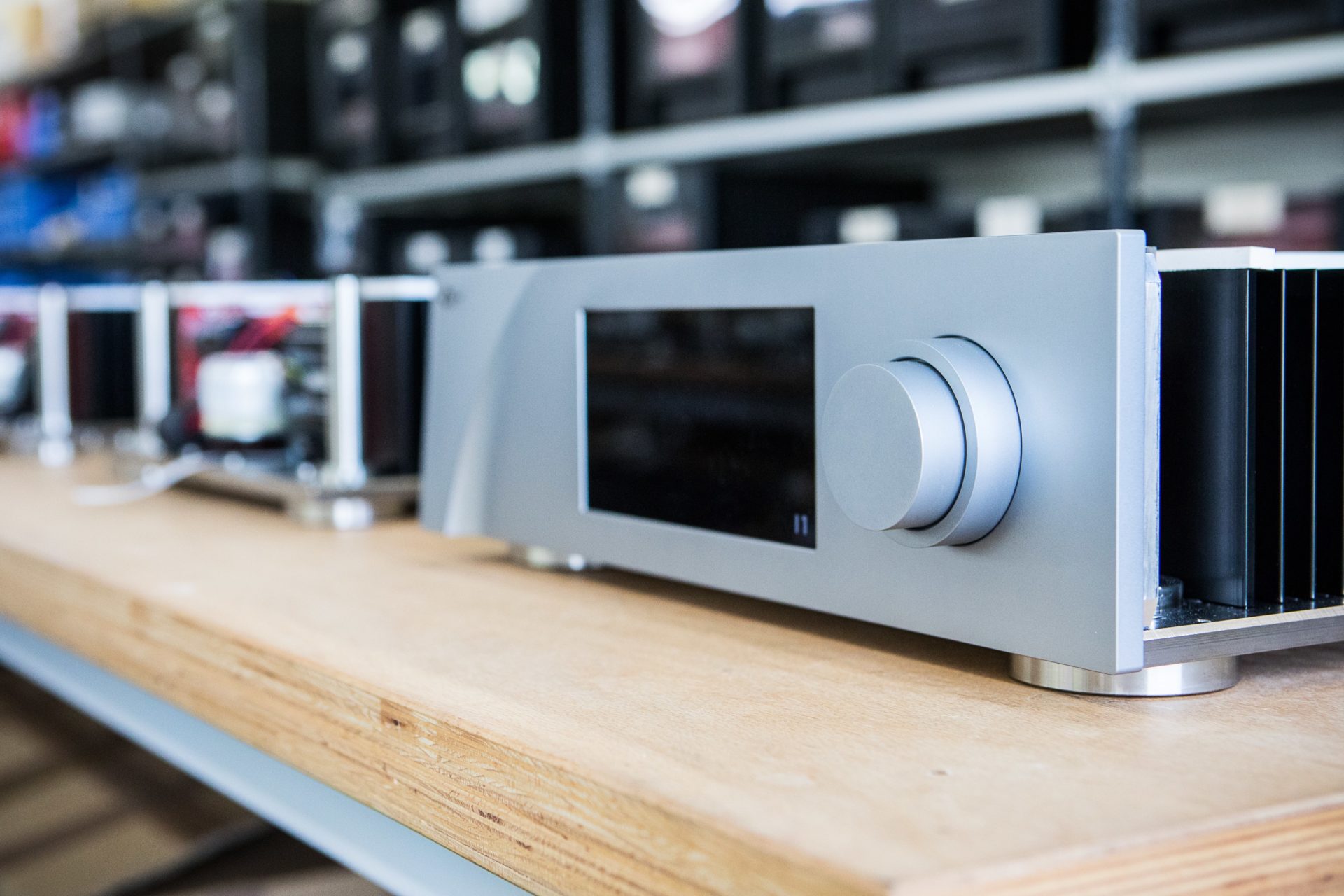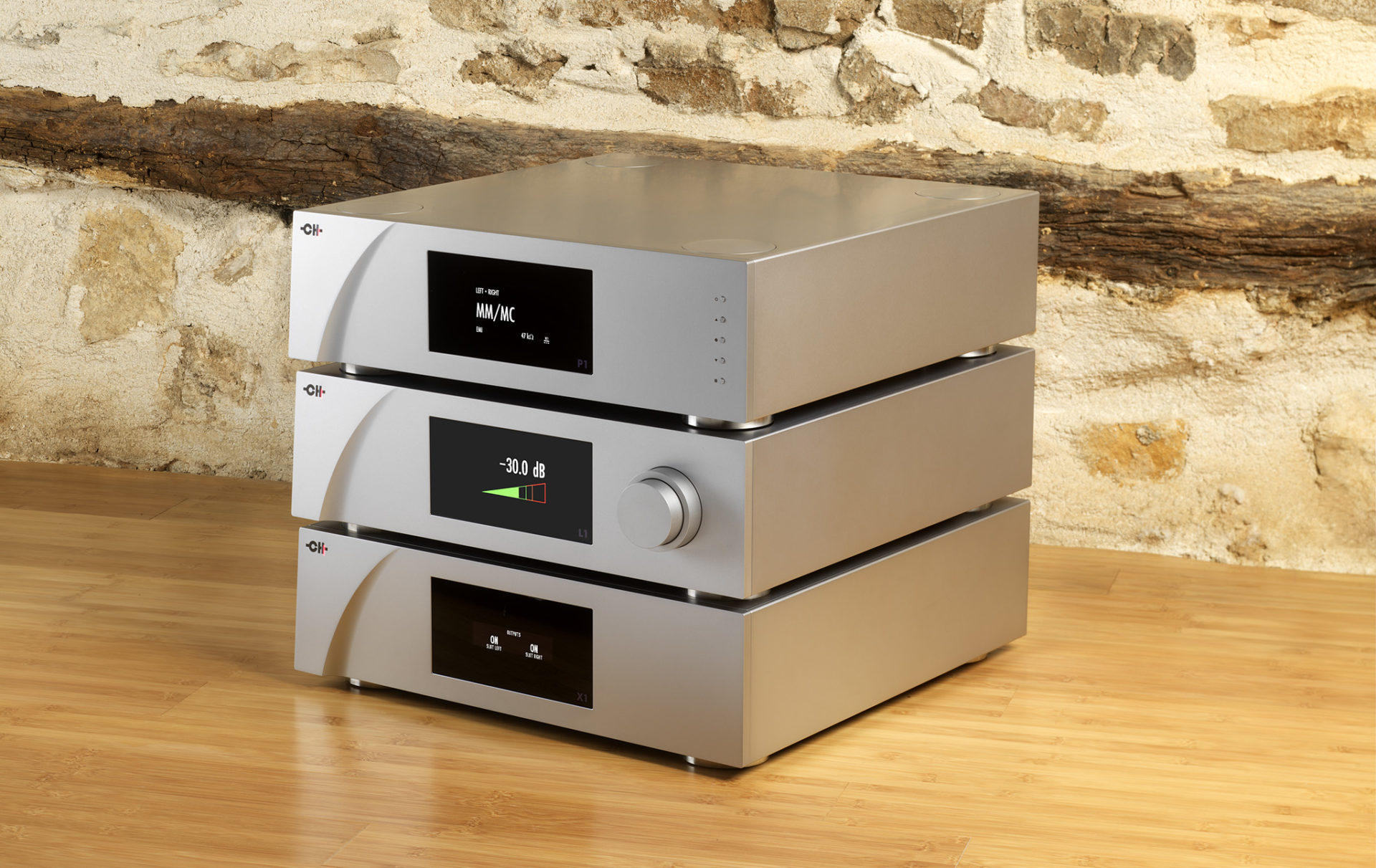Each and every CH Precision circuit is designed with a single goal – to touch the signal as little as possible. It sounds simple and in some ways it is, at least on a conceptual level. But it also means accepting that conventional approaches and accepted practice fall well short of that ideal…
Providing the shortest signal path through a product is one thing; doing the least possible damage as the signal passes is quite another. One demands the smallest number of individual stages necessary to get the job done, with no inter-stage coupling via capacitors or transformers. The other necessitates multiple layers of electrical and mechanical isolation to protect the signal from noise and the outside world.
Every CH Precision product starts life as a blank sheet of paper, its task analysed, the performance parameters defined and the optimum engineering solution selected. There are no preconceptions. In each case, the chosen solution might be found in the digital domain or the analog, selected for its ability to deliver the best possible results in each given situation. The result is that no CH Precision product is either wholly digital or absolutely analog. Like a suspension bridge across a ravine, the road itself might be a simple, arrow straight strip of perfectly smooth tarmac, but the structure that hangs it in space is an incredibly complex and carefully balanced web, constructed from concrete and steel, cables and fixings, that isolates that road from forces both obvious and invisible.
In the same way that building a bridge means selecting your engineering approach (wood, stone or steel; arched, cantilever or suspension) designing an audio product means defining your design path – and then taking that path to its logical extreme. By combining the best aspects of both digital and analog, we can create a whole that is greater than the sum of its parts, a circuit that is shorter and quieter, a product that is more flexible and adaptable, the end result a performance that sets new standards – musically and operationally.
It means that we can provide almost unlimited functional versatility. Take our distinctive dual-concentric control as an example: in most products a twin knob like this would offer just two functions. In a CH product it offers immediate access to at least six distinct operations. But it also controls multiple menus and options and can be programmed to select additional specific operational “shortcuts”. In fact, despite being amongst the most configurable and versatile audio products ever built, every function and option within a CH Precision D1, C1 or L1 unit can be selected or adjusted via this one control – in a range of products that also embody purist, ultra-short signal paths and set new standards for musical performance. It has never previously been possible to optimize the performance or configuration of any cutting-edge audio system to this degree. By doing the heavy lifting at the design stage, we deliver a system that takes the hard work and uncertainty out of set up – and with the addition of our comprehensive, Android-based Control App, that set-up has never been so easy.
But just as you don’t cut corners when you build a suspension bridge, there are no shortcuts when it comes to rediscovering the fragile delicacy and nuance, the emotional and almost physical power of recorded music. When it comes to realizing actual (as opposed to theoretical) performance, production engineering is just as challenging as the initial design: the selection of parts must be exhaustive and construction exacting; the casework must be mechanically optimised and a perfect fit, carefully constructed to shield the delicate circuitry from unwanted physical abuse – internal or external in nature; and for us, the circuits throughout must be both complementary and fully balanced. No detail can be left to chance.


